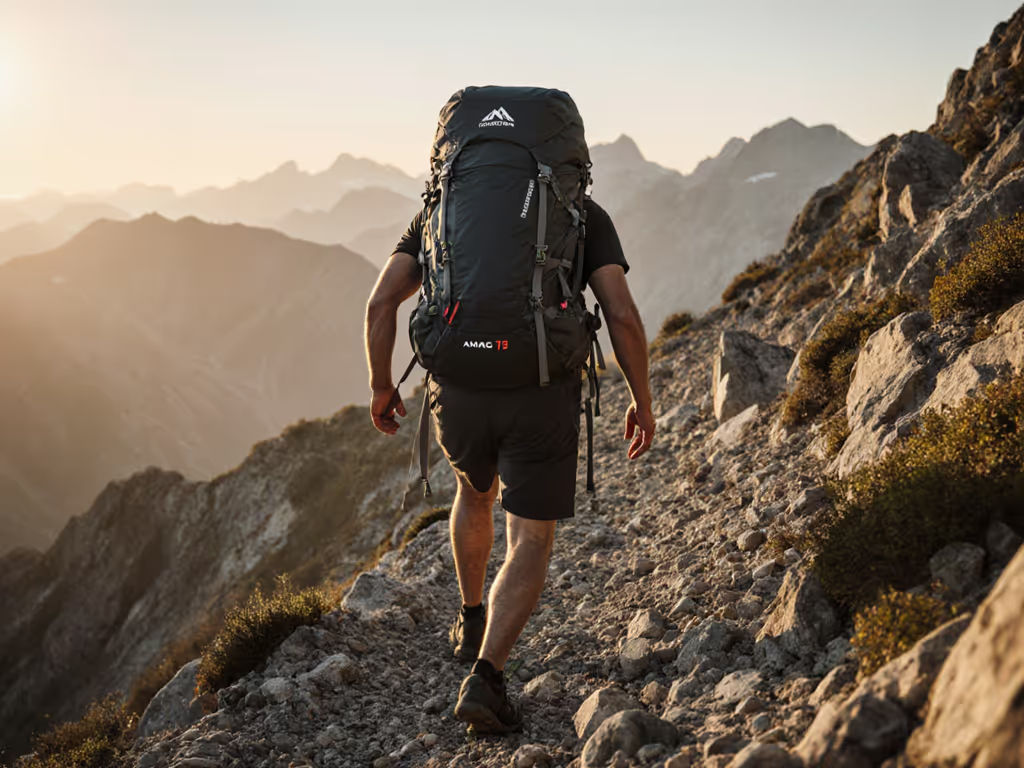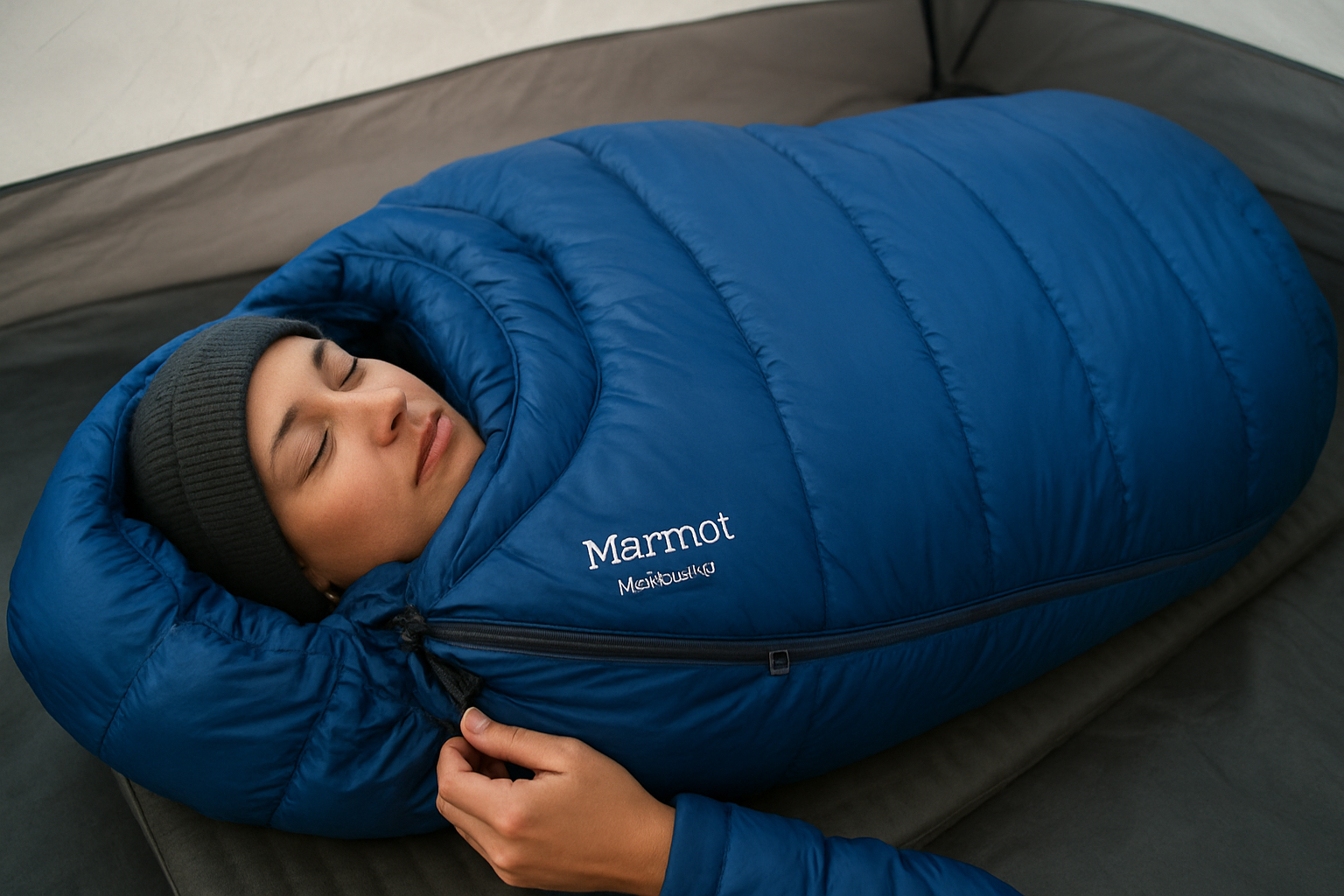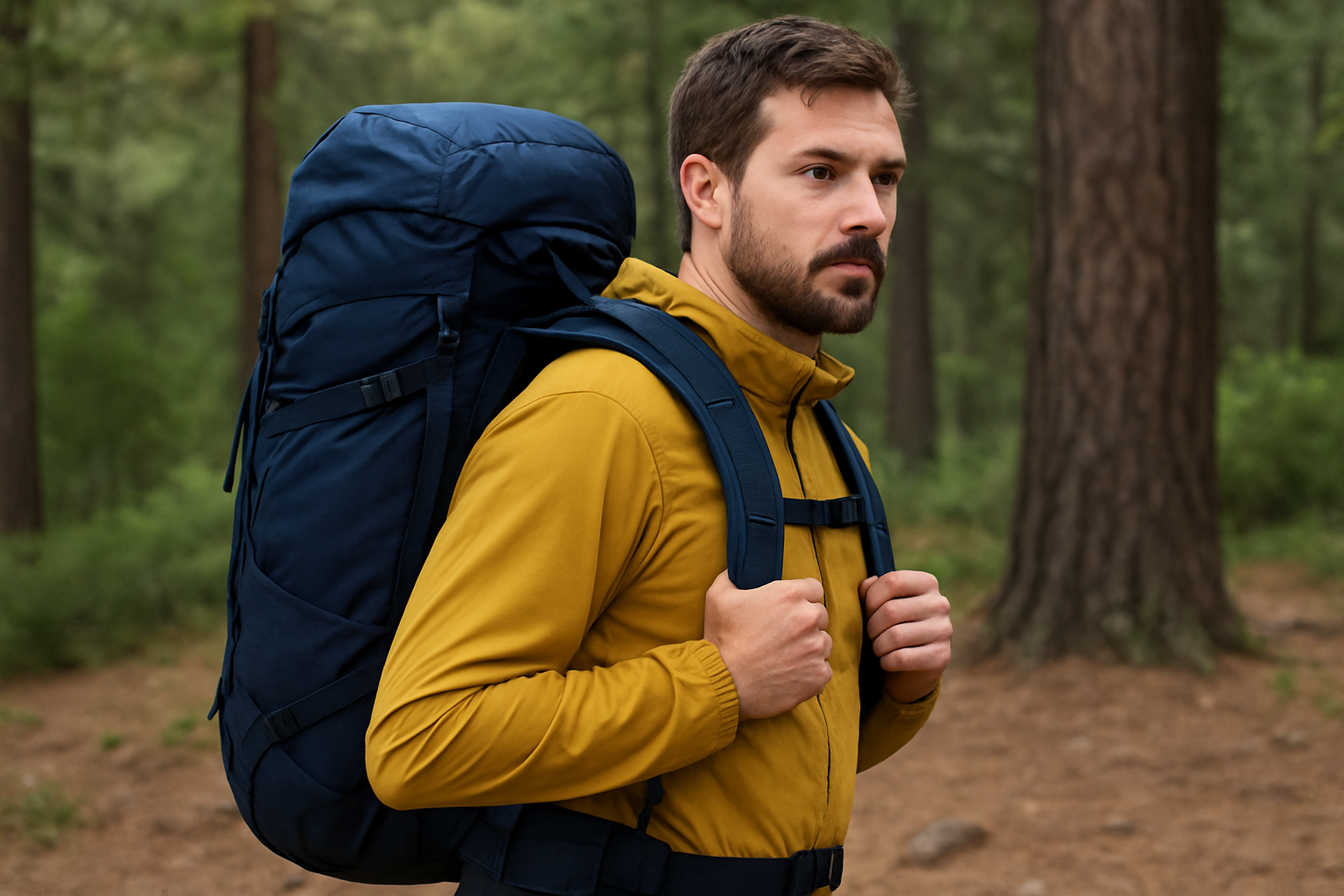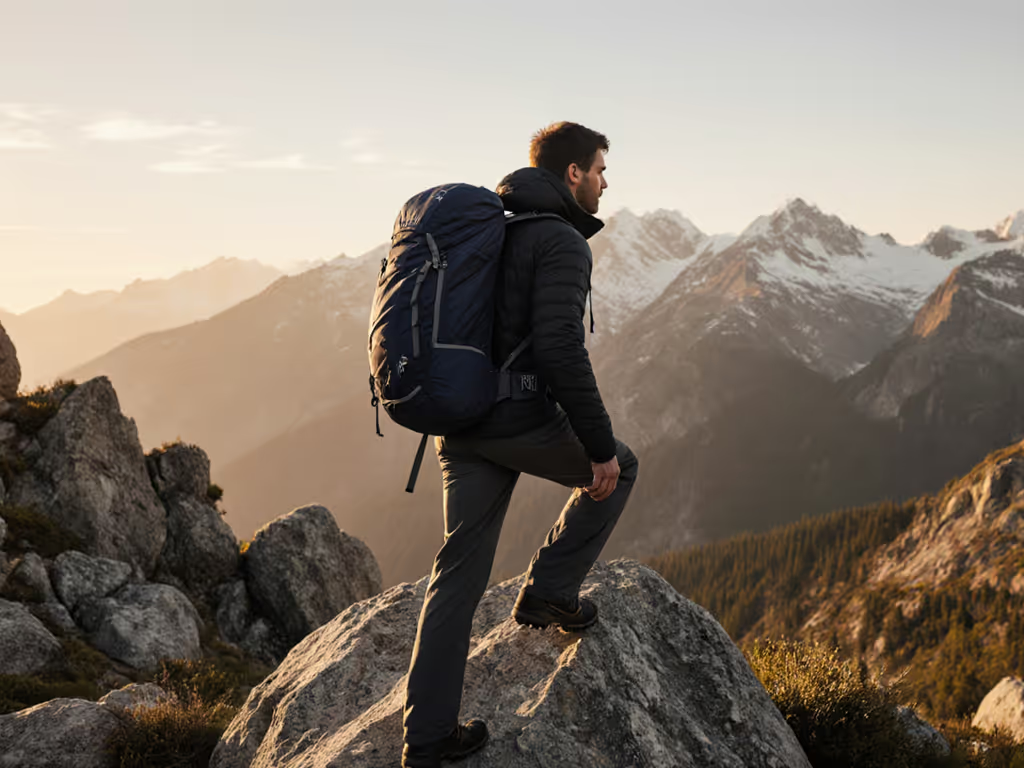
Marmot Micron 40 Down Sleeping Bag Overview: Specs, Packing, and Pack-Fit Guidance for Summer Backpackers

If you’re researching the Marmot Micron 40 down sleeping bag, you’re likely weighing a familiar dilemma: how light can you go without shivering through shoulder seasons and breezy alpine nights. The Marmot Micron 40 is aimed at summer backpackers who want real warmth-to-weight efficiency, dependable materials, and easy ventilation. Based on manufacturer specifications and common field reports, this overview focuses on the details that matter most: reported temperature guidance, packed size, zipper usability, and practical considerations for carrying it in your pack. And because carrying comfort is half the battle, we also include Hiking Pack Fit’s guidance on choosing the right pack volume and organization for carrying this type of bag so you can move farther with less fatigue. For capacity planning across seasons, see our backpack size guide for 3-day hikes.
As you read, watch for clear benchmarks, scenario-based recommendations, and practical care tips. We’ll outline who benefits most from a 40 degree Fahrenheit (4 degree Celsius) down bag, what trade-offs to expect versus quilts or heavier three-season bags, and when a liner, pad upgrade, or shelter choice will make the biggest difference. Ready to sleep cool when it’s hot and still stay comfortable if temps dip a little lower than forecasted? Let’s dive in.
Marmot Micron 40 Down Sleeping Bag: Specs, Materials, and What Stands Out
The Micron 40 targets warm-weather trips, fast-and-light overnights, and low-elevation summer circuits where minimizing bulk matters. Marmot typically builds this model with 650 fill power duck down treated with Marmot’s Down Defender hydrophobic finish, a lightweight 20D (denier) nylon ripstop shell, and a full-length zipper for venting. That combination encourages quick lofting at camp and versatile temperature control in the night. While exact specifications can vary by production year and size, the pattern has been consistent: efficient baffle layout, a modestly roomy mummy silhouette, and a hood you can cinch when needed. The big idea is simple - keep the warmth-to-weight high without sacrificing everyday usability like snag resistance and easy ventilation.
Key Specifications and Features (manufacturer listings and general references)
| Category | Micron 40 (Typical) | Notes |
|---|---|---|
| Temperature Intent | 40 degree Fahrenheit (4 degree Celsius) | Warm-weather focus; ideal for late spring to early fall depending on location. |
| Estimated EN (European Norm)/ISO (International Organization for Standardization) Guidance | Comfort around 44 degree Fahrenheit (7 degree Celsius), Limit around 35 degree Fahrenheit (2 degree Celsius) | Typical for 40 degree Fahrenheit bags; always cross-check the current product page. |
| Fill | 650 fill power duck down with Down Defender | Hydrophobic treatment helps resist moisture accumulation. |
| Shell/Liner | 20D (denier) nylon ripstop shell / soft nylon taffeta liner | Breathable, packable, and easy to air out at camp. |
| Zipper | Full-length, snag-resistant design | Allows quilt-style venting and foot-only vent. |
| Weight | Approx. 1 lb (pounds) 6 oz (ounces) to 1 lb (pounds) 10 oz (ounces) | Depends on size (Regular vs. Long) and production year. |
| Shape | Mummy with anatomical footbox | Balances thermal efficiency and wiggle room. |
| Packed Size | Roughly 6 x 12 inches (inches) compressed | Varies with compression sack and packing technique. |
| Sizes | Regular, Long, Left/Right zip variants | Zip pairing often supported for two bags. |
Two notable features stand out for users. First, the full-length zipper transforms the Micron 40 into a highly adaptable piece of sleep gear, especially in muggy conditions when you want blanket mode. Second, the 20D (denier) shell keeps the mass low yet feels durable enough for regular summer use, especially if you protect it from abrasive surfaces. These details might seem minor, but on multi-night trips they determine whether you wake rested or fiddling with snags and hotspots. If you hike in mixed humidity or enjoy cowboy camping under the stars, these are the kinds of features that elevate real-world comfort.
Warmth-to-Weight, Packability, and Real-World Performance
How warm is the Micron 40 in practice? Manufacturer guidance and user reports suggest comfort in the mid-40s Fahrenheit (around 7 degree Celsius) for average sleepers when paired with a midweight base layer and a sleeping pad offering moderate insulation. With a higher R-value (thermal resistance) pad (4.5 to 5.5) and a wind-stable shelter, many users report extending comfort into the high 30s degree Fahrenheit (approximately 3 to 4 degree Celsius) with minimal drafts. Conversely, on low R-value (thermal resistance) pads or in open shelters when wind pools around the bag, perceived comfort narrows quickly. These patterns align with broader industry guidance: the pad’s insulation and ground coupling can swing perceived warmth by 5 to 10 degrees Fahrenheit for many sleepers.
Watch This Helpful Video
To help you better understand marmot micron 40 down sleeping bag review, we've included this informative video from MyLifeOutdoors. It provides valuable insights and visual demonstrations that complement the written content.
Field Scenarios and Typical Reported Comfort Range
| Scenario | Pad and Layers | Typical Reported Comfort | Notes |
|---|---|---|---|
| Alpine summer, light breeze | R-value (thermal resistance) 4.8 pad, midweight base layer | 38 to 42 degree Fahrenheit (3 to 6 degree Celsius) | Close shelter walls reduce drafts substantially. |
| Low-elevation forest, humid | R-value (thermal resistance) 3.2 pad, light base layer | 45 to 55 degree Fahrenheit (7 to 13 degree Celsius) | Full vent or blanket mode helps manage clamminess. |
| Open bivy, light wind | R-value (thermal resistance) 2.5 pad, beanie, socks | 48 to 52 degree Fahrenheit (9 to 11 degree Celsius) | Wind can rob heat around the zipper line; draft collar management helps. |
Packability is strong for a 650 fill power bag. You won’t reach the thimble-sized stuff sack of a premium 900 fill power quilt, but you gain resilience and a friendlier price point. Expect a compact cylinder that disappears horizontally across your pack’s bottom or vertically along a side wall. For long days with big water carries, the smaller volume genuinely improves load management. Dial your packing with our pack weight distribution pro tips. And if you use a compression sack, alternate between gentle compression and airing out to keep loft healthy. As a rule of thumb, down maintains performance best when stored in a loose sack at home and only compressed during travel days.
Comfort, Fit, and Usability: Zippers, Draft Control, and Sizing for All Campers

Comfort in warm weather is about options. If hot, sweaty back panels slow you down, our backpack ventilation guide explains which designs stay cooler in summer. The Micron 40’s full-length zipper, two-way sliders, and footbox vent let you run the bag like a quilt, a blanket, or a classic mummy as temps change. User feedback highlights the snag-resistant backing on the zipper track, which reduces nighttime fumbles. The hood cinches smoothly without pinching for most sleepers, and the draft tube along the zipper is adequately filled for the rating. If you sleep warm, you’ll likely live in half-zipped mode. If you sleep cool, pairing the bag with a breathable liner adds a couple of degrees of warmth and keeps skin oils off the lining, extending time between washes.
Sizing feels fair for the category. The shoulder girth is not ultratight, which benefits side sleepers and broader frames. Long sizes accommodate taller hikers without cramping the toes, and left/right zip options help couples zip two bags together. Seniors or anyone managing joint stiffness will appreciate that the Micron 40 opens flat, making evening and morning transitions gentler. For photographers, anglers, and climbers who carry odd-shaped layers or crash in awkward bivies, being able to vent the footbox or spread the bag as a blanket eliminates the too-hot or too-cold seesaw common in minimalist quilts.
- Best fit tip: choose the longer size if you’re on the cusp; extra foot room improves circulation and reduces cold spots around toes.
- Draft control tip: use the hood lightly even in mild temps to stabilize the bag and reduce zipper-line leakage.
- Pad pairing tip: for the same total weight, upgrading pad R-value (thermal resistance) often yields more warmth than carrying a heavier bag.
Who Should Choose the Micron 40 vs. Alternatives
Is this your summer bag? If your overnight lows usually land between 40 and 55 degree Fahrenheit (4 to 13 degree Celsius), you value venting flexibility, and you prioritize durability at a fair price, the Micron 40 is a solid option. It is less ideal if you routinely push shoulder-season alpine trips near freezing or you sleep exceptionally cold. In those cases, consider a 30 degree Fahrenheit (approximately -1 degree Celsius) bag or a 40 degree Fahrenheit quilt only if you can reliably add layers and shelter protection. Think of the Micron 40 as a versatile warm-weather anchor that tolerates a surprise chill when your pad and layers are dialed.
Micron 40 vs. Common Alternatives (generalized comparisons)
| Option | Typical Weight | Warmth Band | Pros | Trade-offs |
|---|---|---|---|---|
| Marmot Micron 40 | 1 lb (pounds) 6 oz (ounces) to 1 lb (pounds) 10 oz (ounces) | ~38 to 55 degree Fahrenheit (3 to 13 degree Celsius) depending on pad and layers | Full-length zipper, durable shell, fair price | Heavier than elite quilts; 650 fill power packs slightly larger |
| Ultralight 40 degree Fahrenheit quilt | 12 to 16 oz (ounces) | ~40 to 55 degree Fahrenheit (4 to 13 degree Celsius) for practiced users | Lowest weight and packed size | Draft management skill required; less forgiving for new users |
| 30 degree Fahrenheit mummy bag | 1 lb (pounds) 12 oz (ounces) to 2 lb (pounds) 4 oz (ounces) | ~30 to 50 degree Fahrenheit (-1 to 10 degree Celsius) | Extra buffer for shoulder season | More weight and bulk; too warm on muggy nights |
Choose the Micron 40 if you hike coastal ranges, mid-elevation forests, or interior trails where nighttime breezes relieve daytime heat. Choose a quilt if every ounce matters and you already have dialed pad attachment habits. Choose a warmer bag if you frequent high basins in September or sleep cold. Not sure which way to lean? The quick decision filter: if your minimum lows are rarely below 40 degree Fahrenheit (4 degree Celsius) and you want the simplicity of a zipper plus blanket mode, the Micron 40 is the safer, friendlier pick.
Care, Durability, and Sustainability Considerations
Down excels when dry and fluffed. The Micron 40’s Down Defender treatment gives the down clusters a fighting chance in humid air or light condensation, but like all down, it loses loft when saturated. Aim to manage moisture rather than test the limits. Vent your shelter, crack the zipper before you sweat, and use a liner if you run hot. When you get home, store the bag in a large breathable sack rather than compressed. Wash infrequently with down-specific detergent, use low heat with clean tennis balls to break up clumps, and confirm full dryness before storage to prevent odor or mildew.
Durability feels appropriate for a warm-season bag. The 20D (denier) shell resists snags from tent zippers and mild brush but is not a drop cloth; use a groundsheet outside shelters. Stitching holds up under normal tossing and turning, and the zipper track’s stiffener helps keep snags rare. From a sustainability angle, many manufacturers, including Marmot, have increased use of responsibly sourced down and reduced harmful chemistry in Durable Water Repellent (DWR) treatments across recent seasons. If repairability matters, prioritize a tidy repair kit: tenacious tape for shell nicks, a small needle and thread, and alcohol wipes. For pack care and common fixes, see our hiking backpack maintenance guide. Field-fixable gear extends lifespan and reduces waste - a win for your wallet and for the places you hike.
Backpack Fit Matters: Pairing Your Bag With the Right Pack

Even the best summer bag underperforms if your backpack carries poorly. That’s where Hiking Pack Fit comes in. Hikers often struggle to find the right backpack design and fit to ensure comfort, stability, and reduced fatigue on the trail. Hiking Pack Fit provides tested guidance and a diverse fit database that matches torso length, shoulder shape, and hipbelt geometry, helping you select and refine packs for your body and your activity. That includes practical pack organization and packing techniques for carrying sleeping bags, camera cubes, fishing tubes, and climbing hardware, senior-friendly backpack recommendations, and guidance on essential add-ons for improved comfort like load-lifters, shoulder strap wraps, and hipbelt padding.
Practical Packing With the Micron 40
| Pack Volume | Suggested Layout | Why It Works |
|---|---|---|
| 30 to 38 liters | Bag horizontally at bottom, pad vertical along side, cook kit above | Keeps center of gravity low and stable for fast day-to-overnight trips. |
| 40 to 50 liters | Bag in dry sack, mid-pack behind spine, layers above, food nearest back | Balances weight closer to your core, reducing shoulder strain. |
| 50 to 60 liters (photo/fishing/climbing) | Bag compressed in lower third; dedicated cubes for lenses or tackle | Preserves access to tools while protecting down from damp items. |
Hiking Pack Fit’s fit database pairs you with durable and repairable packs verified by field tests, so you can trust the frame and suspension under real loads. Our pack-focused guides break down how subtle changes - like moving the Micron 40 from bottom to mid-pack or adjusting the frame sheet - translate to lower perceived effort over a long climb. The right bag is only half the sleep system; the right pack makes carrying it feel effortless.
Value Snapshot and Buying Advice
Viewed against its peers, the Micron 40 delivers a compelling mix of flexibility and reliability. You get proven materials and a full-length zipper at a weight and price that make sense for frequent summer trips. The bag responds well to skill upgrades: switch to a higher R-value (thermal resistance) pad for cooler lows, add a liner for shoulder-season forays, or run it in blanket mode for muggy campgrounds. You are not buying the absolute lightest option, but you are buying an easy keeper that adapts night after night. For most backpackers, that comfort predictability matters more than shaving the last few ounces.
Quick Scorecard (1 to 10, relative to warm-season competitors)
| Category | Score | Rationale |
|---|---|---|
| Warmth-to-Weight | 8 | Efficient for 650 fill power; responds well to pad upgrades. |
| Comfort and Usability | 9 | Full-length zipper and venting make hot nights easy to manage. |
| Packability | 8 | Compact cylinder that fits small packs without fuss. |
| Durability | 8 | 20D (denier) shell holds up well when treated thoughtfully. |
| Overall Value | 9 | Friendly price-to-performance, broad use in true summer conditions. |
If you sleep warm, live in a humid region, or want a simple, forgiving bag for multi-sport weekends, the Micron 40 belongs on your shortlist. If you are a cold sleeper or chase shoulder seasons at elevation, step up a rating. And if you are unsure which way to go, combine this overview with pack fit guidance so your whole system - bag, pad, shelter, and backpack - works in concert rather than competing with itself.
Expert Tips to Stretch Your Comfort Range
Small tactics can add up to big warmth gains. In calm conditions, vent early before you sweat, then re-cinch as temps fall to avoid dampness. In breezy camps, pitch low and block ground drafts near your zipper line. Wear a light beanie and dry socks to bed, and stash a breathable liner for chilly forecasts. If the night might dip below your comfort band, warm a water bottle and place it near your core for 30 minutes - preheating the microclimate noticeably extends comfort. Lastly, prioritize your sleeping pad: industry guidance shows ground losses can account for a large slice of nighttime heat loss, and upgrading pad R-value (thermal resistance) typically outperforms carrying a heavier bag at a similar total weight.
Need an analogy? Think of your sleep system like a team: the bag is your striker, the pad your defense, and the shelter your midfield. When the defense is weak, even a great striker struggles. Put a stronger pad behind the Micron 40, and it wins more nights with the same effort. That is how you make a summer setup resilient without hauling unnecessary bulk.
Bottom line: a nimble 40 degree Fahrenheit bag becomes a multi-week workhorse when you tune the pad, ventilation, and shelter to the conditions you actually face.
Quick Checklist
- Forecast lows: 40 to 55 degree Fahrenheit (4 to 13 degree Celsius) is the sweet spot.
- Pad R-value (thermal resistance): aim for 3.2 minimum; 4.5 if wind or altitude threaten.
- Venting plan: practice blanket mode at home to avoid zipper fumbling at 2 a.m.
- Liner strategy: thin liner for a cleaner, warmer, more versatile setup.
- Storage: loose sack at home, brief compression only during travel.
Everything above is designed to give you clarity, not just opinions. We synthesize manufacturer guidance, user reports, and our pack-fit expertise so the recommendations map to what your body feels at camp. That practical lens is the same one we use at Hiking Pack Fit when matching hikers to packs: recommend, validate, and adjust until the solution genuinely reduces fatigue and increases joy on the trail.
Recap for Busy Readers
- Micron 40 is a flexible, warm-season bag with excellent venting and solid materials.
- Comfort hovers around mid-40s degree Fahrenheit (approximately 7 degree Celsius) for average sleepers with decent pads.
- Upgrading pad R-value (thermal resistance) and practicing venting beats buying a heavier bag for most summer trips.
- Hiking Pack Fit can ensure your pack carries the system comfortably for long days.
The Marmot Micron 40 shines when you want fewer guesses and more good sleep. Pair it thoughtfully and it feels like a cheat code for warm-weather miles.
Sleep light, vent smart, and carry comfortably - that’s the Micron 40 promise when tuned to real conditions.
Imagine the next 12 months of trips with a sleep system that just works and a pack that feels custom to your frame, whether you shoot sunrise photos or haul a fly kit.
What questions do you still have after this Marmot Micron 40 overview, and how can we help you shape a system that fits your body and your routes?
Additional Resources
Explore these authoritative resources to dive deeper into marmot micron 40 down sleeping bag review.
Elevate Your Micron 40 Setup with Hiking Pack Fit
Real-world tested, lab-backed pack guidance and a diverse fit database help backpackers, seniors, and specialists select and fine-tune packs for body type and activity, enhancing comfort and performance.




